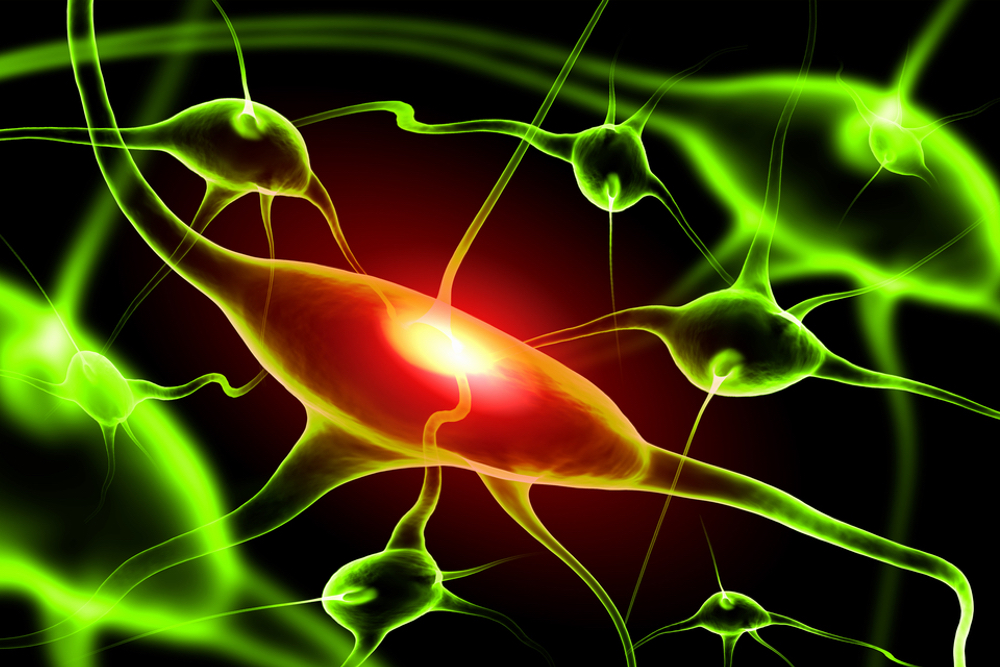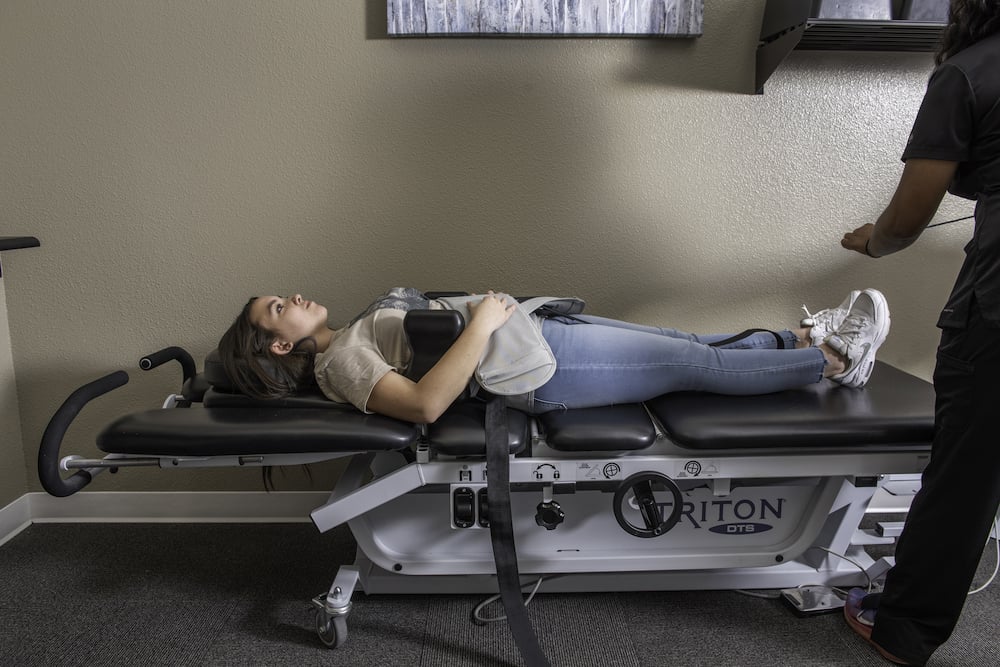How to Treat a Pinched Nerve
4 min read

Whether you slept in a weird position or overextended yourself at work, or experienced a sharp pain that radiates along your neck, back, or leg, you may have a pinched nerve. Pinched nerves are common in the neck, but they can also happen in other areas of the body. Keep reading to learn more about pinched nerves and how they are treated.
What is a Pinched Nerve?
Pinched nerves happen when a nerve is compressed. This often occurs when a vertebra of the spine is rotated out of position, causing pressure on the nerve. It only takes a small amount of pressure to alter the functional ability of a nerve. Pinched nerves are common in the neck but can happen in many other areas of the body.
Pinched Nerve Causes
Pinched nerves are caused by excess pressure on one of the nerves from the surrounding tissues. The surrounding tissue could be a bone or cartilage, such as when a herniated spinal disc causes the spinal column to press on the nerve. Some common causes of pinched nerves include:
- An injury whether it just happened or it’s been a while
- Overuse of a muscle or joint
- Sports related activity such as repetitive motions or overextending
- Being overweight
Pinched Nerve Symptoms
Symptoms of a pinched nerve include:
- Numbness or decreased sensation
- Sharp pain with an outward radiation
- Muscle weakness
- Tingling sensation
Pinched nerves are common in the neck but can also occur in the shoulder, back, upper chest, arm, elbow, wrist, and hand.
Will Pinched Nerve Go Away On Its Own?
Yes, pinched nerves can go away on their own. Most pinched nerves go away in about four to six weeks. If you’re experiencing ongoing pain that doesn’t seem to improve, it is important to figure out what might be happening since you could have an injury that needs to be addressed.
There could also be another medical condition causing the nerve pain such as a bulging or herniated disc, carpal tunnel syndrome, or other common conditions that can be treated to reduce the nerve pain. For this reason, it’s a good idea to see a chiropractor or another medical professional for a diagnosis if the pain lasts more than a few days after you’ve given it proper rest.
If the pain gets worse with certain movements, try to avoid doing those movements as much as possible. The tissues compressing the nerve and causing a pinched nerve are usually related to inflammation, so taking steps to reduce inflammation may facilitate healing.
At-Home Treatment for Pinched Nerves
One of the best steps you can take to heal a pinched nerve is to rest. Sleeping gives your body a chance to heal and recover, but unfortunately, pinched nerve pain can sometimes feel the worst at night. Gentle stretching and yoga can help but be mindful of the pain and avoid any movements that exacerbate it. If the pain of a pinched nerve interferes with your daily activities, then using an ice pack or heated compress can help soothe the pain and ease discomfort.
Sometimes, pinched nerves can worsen and become more serious problems like chronic pain or nerve damage. If your symptoms don’t seem to improve, it might be time to seek professional help.
Chiropractic Treatment for Pinched Nerve
Chiropractic treatment can help loosen muscle tension and improve blood flow to heal a pinched nerve. If you visit your chiropractor for a pinched nerve, they’ll start by assessing you to determine where it is located. This helps them determine the best approach for treatment.
Some chiropractic treatments that can help with pinched nerves include:
- Spinal adjustment
- Spinal decompression
- Lumbar traction
- Cold laser therapy
Related Blog: How Chiropractic Care Can Help Nerve Pain
Spinal Adjustment
Spinal manipulation or a chiropractic adjustment is one of the most common chiropractic treatments, and it can certainly be effective in treating a pinched nerve. Your chiropractor can relieve your symptoms and heal your pinched nerve by returning your spine to alignment.
During a chiropractic adjustment, your chiropractor will feel your spinal column and check for any areas of misalignment. They might use a manual technique to gently apply pressure to any problem areas, helping to ease pain and align your spine. Spinal adjustments can help relieve back pain, neck pain, and headaches, improve circulation, and mobility, promote recovery, improve your nervous system function, and reduce inflammation.
Spinal Decompression
Sometimes, a pinched nerve can be caused by a herniated or bulging disc pressing on a nearby nerve. Spinal decompression is commonly used to help with herniated or bulging disease. Spinal decompression is a non-surgical treatment method that helps to reduce pressure on the spinal discs. This gentle stretching process usually lasts 15 to 30 minutes per treatment, and you’ll usually have multiple treatments over a few weeks.
Lumbar Traction
Lumbar traction is another spinal decompression treatment that helps to relieve pain in the lower back. This treatment method uses the Back on Trac system to help with gentle stretching of the lower spine. Lumbar traction involves sitting in a specialized chair that will gently stretch your back for 12 - 15 minutes. Depending on your unique situation, it may take up to 12 - 24 sessions for full relief.
Cold Laser Therapy
Cold laser therapy is another chiropractic approach to pain relief that can help with pinched nerves. Cold laser therapy uses laser energy to promote healing by improving blood flow to a given area. Cold laser therapy can help reduce inflammation that is causing the area around the nerve to “pinch” the nerve.
Village Chiropractic Offers a Personalized Approach to Nerve Pain
At Village Chiropractic, we pay close attention to each patient’s unique situation to offer the best approach to treatment. The earlier you start treatments, the less time they’ll take to work and the sooner you’ll feel better! We use holistic methods to treat many different conditions, including back pain, neck pain, shoulder pain, knee pain, and more. Request an appointment at our office in The Woodlands for a consultation to discuss what’s causing your pain and possible treatments.
More from Our Blog on This Topic
4 min read




